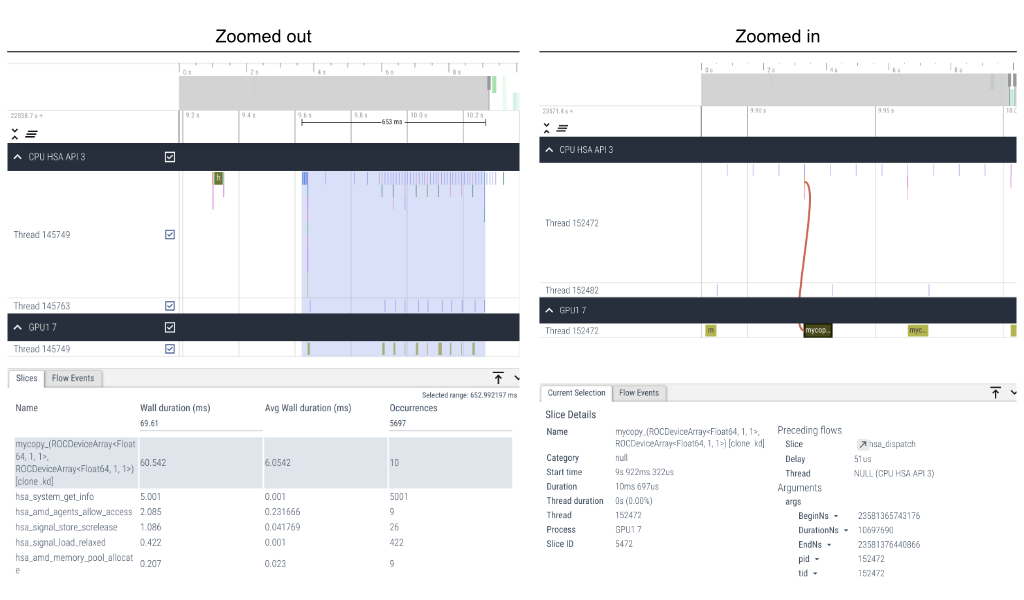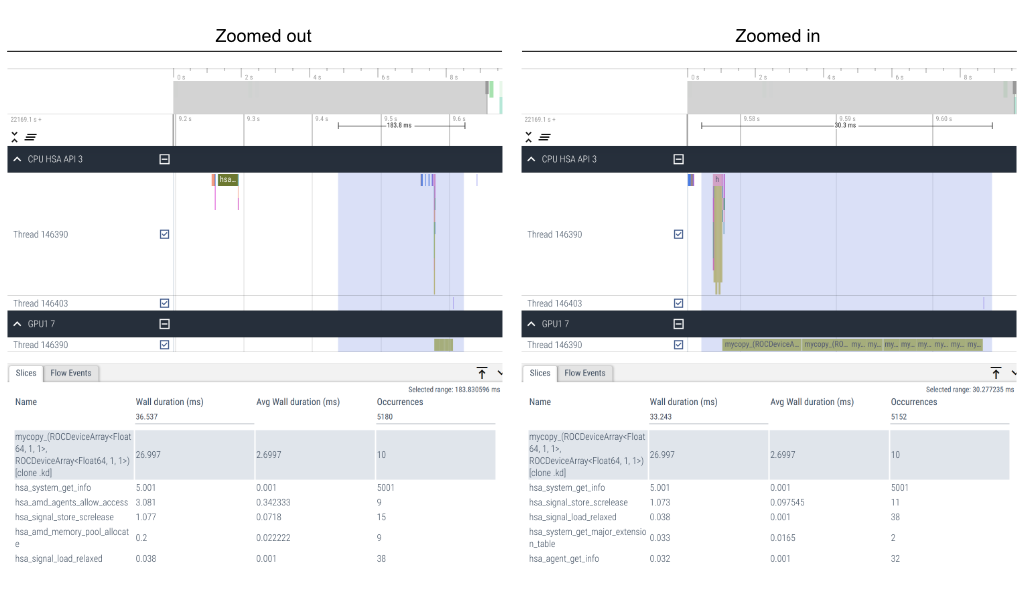Profiling
rocprof
rocprofv2 allows profiling both HSA & HIP API calls (rocprof being deprecated).
Let's profile simple copying kernel saved in profile.jl file:
using AMDGPU
function mycopy!(dst, src)
i = workitemIdx().x + (workgroupIdx().x - 1) * workgroupDim().x
if i ≤ length(dst)
@inbounds dst[i] = src[i]
end
return
end
function main(N)
src = ROCArray{Float64}(undef, N)
dst = ROCArray{Float64}(undef, N)
groupsize = 256 # nthreads
gridsize = cld(N, groupsize) # nblocks
for i in 1:10
@roc groupsize=groupsize gridsize=gridsize mycopy!(dst, src)
AMDGPU.synchronize()
end
AMDGPU.unsafe_free!(dst)
AMDGPU.unsafe_free!(src)
AMDGPU.synchronize()
return
end
main(2^24)Profiling problematic code
ENABLE_JITPROFILING=1 rocprofv2 --plugin perfetto --hip-trace --hsa-trace --kernel-trace -o prof julia ./profile.jlThis will produce prof_output.pftrace file which can be visualized using Perfetto UI.

Here we can clearly see that host synchronization after each kernel dispatch causes poor device occupancy (empty spaces between kernel dispatches).
Profiling fixed code
We can fix this by moving synchronization outside the loop so that it happens only once.
...
for i in 1:10
@roc groupsize=groupsize gridsize=gridsize mycopy!(dst, src)
end
AMDGPU.synchronize()
...Running profiling again and visualizing results we now see that kernel launches are adjacent to each other and that the average wall duration is lower.

Debugging
Use HIP_LAUNCH_BLOCKING=1 to synchronize immediately after launching GPU kernels. This will allow to pinpoint exact kernel that caused the exception.